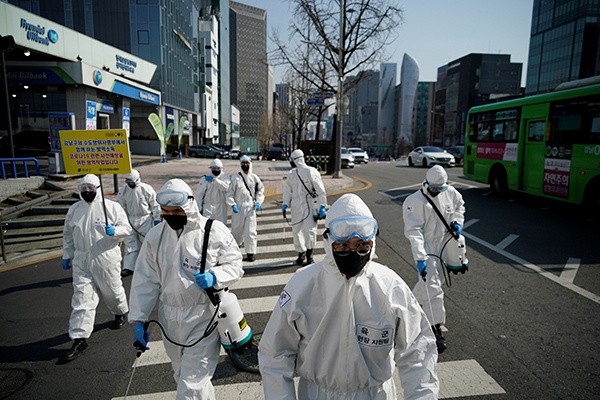
Although medical experts believe that a person needs to be quarantined for 14 days before coronavirus symptoms are detected, it seems that new studies reveal that this isn't the case. The new incubation period of CoVID-19 can now last as long as 27 days, according to Health authorities in Hubei.
A 70-year-old man in China' s Hubei province got infected with the novel coronavirus but did not show symptoms until 27 days later, the local Chinese government reported on February 22. This recent development implies that the incubation period could be much longer than the 7-14 days that has been presumed since the outbreak was reported in January.
The prolonged incubation period further complicates efforts to contain the spread of epidemic not only in China but also globally. The novel coronavirus which first emerged in Wuhan, Hubei Province has infected 93, 090 globally, with 80, 422 confirmed cases in China, and 12, 668 around the globe.
The patient, who was identified as Jiang visited his sister who was infected with coronavirus in Northwestern Hubei, the epicenter of the virus. Since he was exposed to an infectious person, the health authorities subjected him to two nucleic acid tests in which he tested positive. He did not exhibit symptoms however until February 20, 27 days after the exposure.
The 27 days observation period might still not be accurate, virologists warn. This development has dire implications on management and control of the novel epidemic as it reveals that the past quarantines might have been ineffective and many of those who were released and cleared of coronavirus test might have been unsuspectingly spreading the disease.
The Thailand Medical News reported last February 11 that based on 1,000 coronavirus patients in Wuhan recorded an incubation period of 24 days and noted that only 43.8% of patients showed fever symptoms. The fever symptoms, however, increased to 87.9% following hospitalization.
The research team also revealed that the early-identification method might have defects that resulted in undetected cases. Unlike SARS and MERS, the absence of fever in 2019-nCOV coronavirus cases is more frequent among patients. The researchers warned that cases of COVID-19 may be missed if the surveillance case definition is focused on fever detection only.
To detect cases of COVID-19 in China, protocols require patients to be subjected to CT scans to check signs of viral infection, commonly a ground-glass opacity or bilateral patchy shadow in the chest. Should the patient show such signs, nucleic acid tests (NATs) are done to confirm the case.
However, in the recent study, only half of the 840 patients who underwent a CT scan showed the ground-glass opacity, and 46% showed bilateral patchy shadows. The study also discovered that out of 63 stool specimens, four or 6.5% tested positive to 2019-nCoV coronavirus. Four other patients were detected to have positive 2019-nCoV coronavirus in the gastrointestinal tract, saliva or urine through rectal swabs.
Noting that relying on CT scans alone could fail to identify a significant proportion of infected patients, the diagnostic criteria were revised nationwide such that CT scans indicating pneumonia are no longer required to identify suspected coronavirus cases. The researchers also called for integrating systemic protection measures in diagnosis, taking into consideration the possible transmission through gastrointestinal secretions.
© 2025 NatureWorldNews.com All rights reserved. Do not reproduce without permission.





